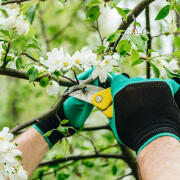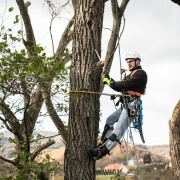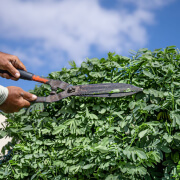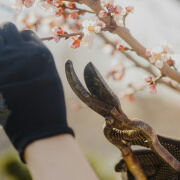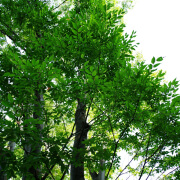Understanding Different Tree Pruning Techniques
Tree pruning plays a significant role in maintaining the health and safety of our leafy companions. By removing dead or diseased branches, you can help a tree thrive, prevent the spread of pests, and reduce the risk of them falling unexpectedly. This practice is also about aesthetics, giving trees a nicer shape which can make your garden look more inviting. Especially in a place like Brisbane, where the lush landscape is part of the charm, keeping trees well-maintained is essential. The local climate, characterised by warm temperatures and occasional storms, demands regular attention to tree care to prevent storm-related damage and ensure safety.
In Brisbane, understanding how to prune trees properly helps them grow stronger and healthier and integrate well into the diverse landscape. Different techniques cater to different tree species and growth patterns, making it crucial to know which method fits the specific tree type. Let’s explore the basics of tree pruning and how it can benefit your garden efforts throughout the year. This knowledge will keep your space looking fresh and vibrant while cultivating a more secure environment for everyone to enjoy.
The Basics of Tree Pruning
Pruning is essentially the practice of trimming trees to encourage healthy growth and structure. It involves cutting away specific parts, usually branches, to maintain the tree’s health and shape. Here’s a straightforward look at why pruning matters and how it’s done:
– Improved Health: By removing dead or diseased branches, pruning prevents the spread of decay and stops harmful pests from taking hold.
– Safety First: Pruning minimises the risk of branches falling during storms, which can be crucial in Brisbane’s weather conditions.
– Enhanced Beauty: Well-pruned trees look nicer and can improve the overall appearance of your property.
When it comes to timing, the best period for pruning is typically during the tree’s dormant season, often in late winter or early spring. This allows for a clear view of the tree’s structure and helps to avoid sap loss, which can attract pests. However, the specific timing can vary based on the tree type and the local climate, so it’s always good to plan accordingly.
Choosing the right tools is also key to effective pruning. A pair of sharp pruning shears or loppers is great for small to medium-sized branches, while a pruning saw is better suited for larger limbs. Keep tools clean and sharp to ensure clean cuts, which heal faster and lower the chance of disease entering the tree. By understanding these fundamentals, you’re setting the stage for healthier, more robust trees that can withstand the elements and continue to add beauty to your surroundings.
Different Tree Pruning Techniques
Tree pruning techniques can vary depending on the desired outcome and the health needs of the tree. Understanding these methods can help you choose the right approach for your garden in Brisbane.
1. Crown Thinning: This involves selectively removing branches to reduce the tree’s density. It improves air circulation and light penetration, which can enhance the tree’s health. Crown thinning is best for managing trees that have grown too thick, allowing the remaining branches to grow more vigorously.
2. Crown Raising: This technique focuses on removing the lower branches of a tree. It’s useful for creating clearance under the tree, which can be practical for pathways or allowing more sunlight to reach the ground. Crown raising should be done gradually to avoid putting the tree under stress.
3. Crown Reduction: Often used to reduce the height or spread of a tree, crown reduction involves cutting back to a suitable growth point. This method is beneficial for controlling the size of a tree that might otherwise interfere with buildings or power lines, common concerns in urban settings like Brisbane.
4. Pollarding: A more intense form of pruning, pollarding involves cutting back a tree to its main branches repeatedly. It’s often applied to specific tree species that respond well to it. Although it requires more maintenance, pollarding can help manage vigorous trees and keeps them at a manageable size.
Best Practices for Tree Pruning in Brisbane
Knowing how the local climate affects tree growth is key to successful pruning in Brisbane. Here are some tips to ensure effective pruning:
– Consider the Season: Avoid pruning during wet seasons when trees are most vulnerable. Instead, plan your pruning during dry spells to minimise the risk of disease.
– Use the Right Tools: Ensure your pruning tools are sharp and clean before starting. This reduces the chance of tearing the bark and helps to prevent the spread of disease.
– Avoid Over-pruning: Only remove as much as necessary to achieve your goal. Over-pruning can stress the tree and hinder its ability to recover.
Common mistakes such as incorrect cutting angles or removing too much can harm a tree. Staying informed and cautious will help maintain the health and appearance of your trees.
When to Call a Professional
Certain situations demand an expert’s touch. Large trees, those near buildings, and those with complex growth patterns might require professional skills. Arborists are equipped with the right knowledge and tools to handle such tasks safely.
Hiring professionals offers peace of mind that the job is done correctly, reducing the likelihood of damage. Whether it’s understanding complex techniques or providing advice for specific tree species, expert help ensures that pruning promotes healthy growth and safety for your property.
Maintaining Tree Health in Brisbane’s Climate
Regular pruning is like a health check-up for your trees, keeping them strong and thriving throughout the year. With Brisbane’s robust weather patterns, keeping an eye on seasonal changes and adjusting your tree care routine accordingly is important. This prevents potential issues and enhances your garden’s beauty while ensuring safety.
Incorporating these practices will lead to a more vibrant and secure outdoor space. Engaging with tree care experts when necessary helps foster a healthy environment and ensures the longevity of your greenery.
Ensure your trees stay healthy and your yard remains safe with expert care designed for Brisbane’s unique climate. For professional help with tree pruning in Brisbane, trust the experienced team at TPS Tree Services to deliver practical solutions that suit your property’s needs.

